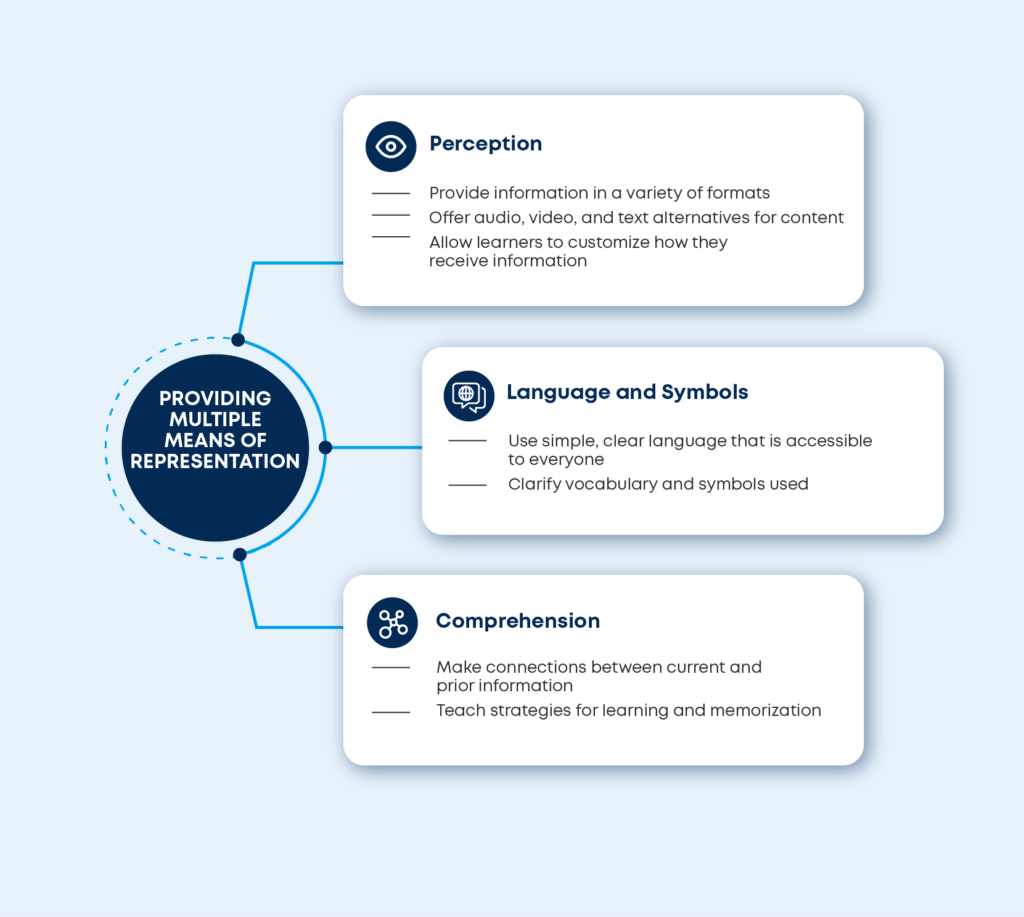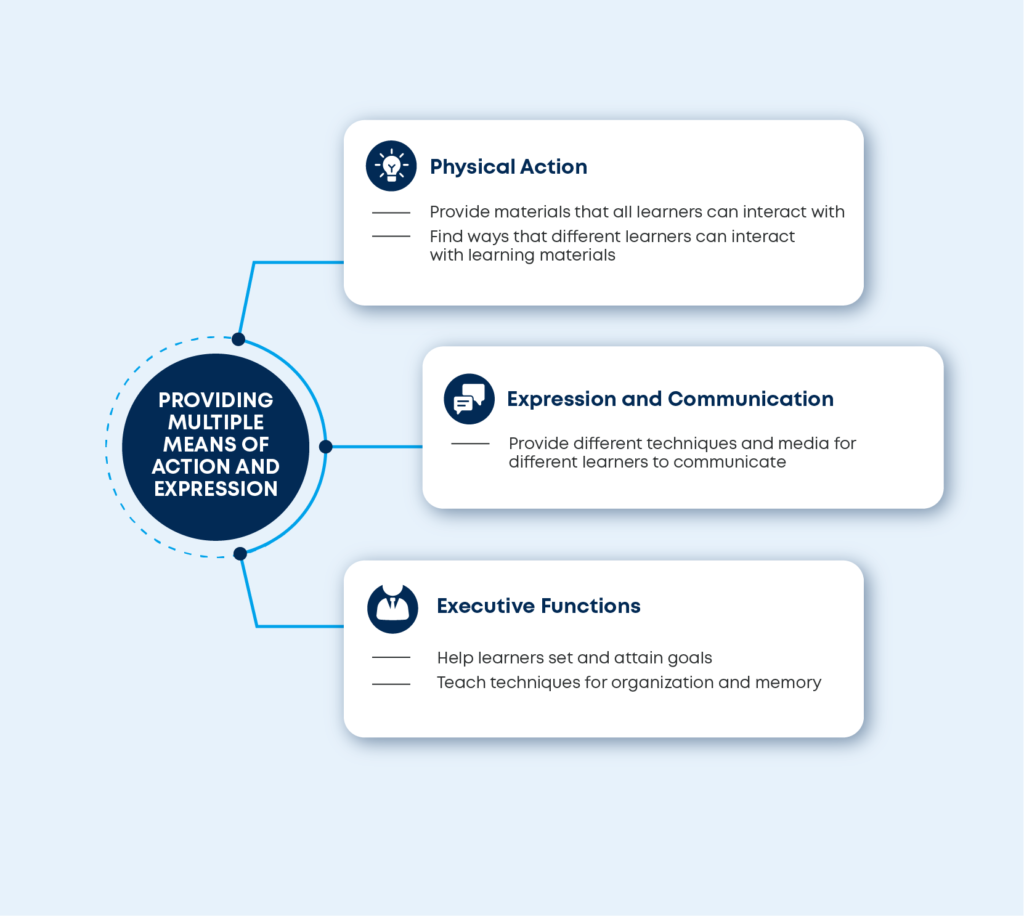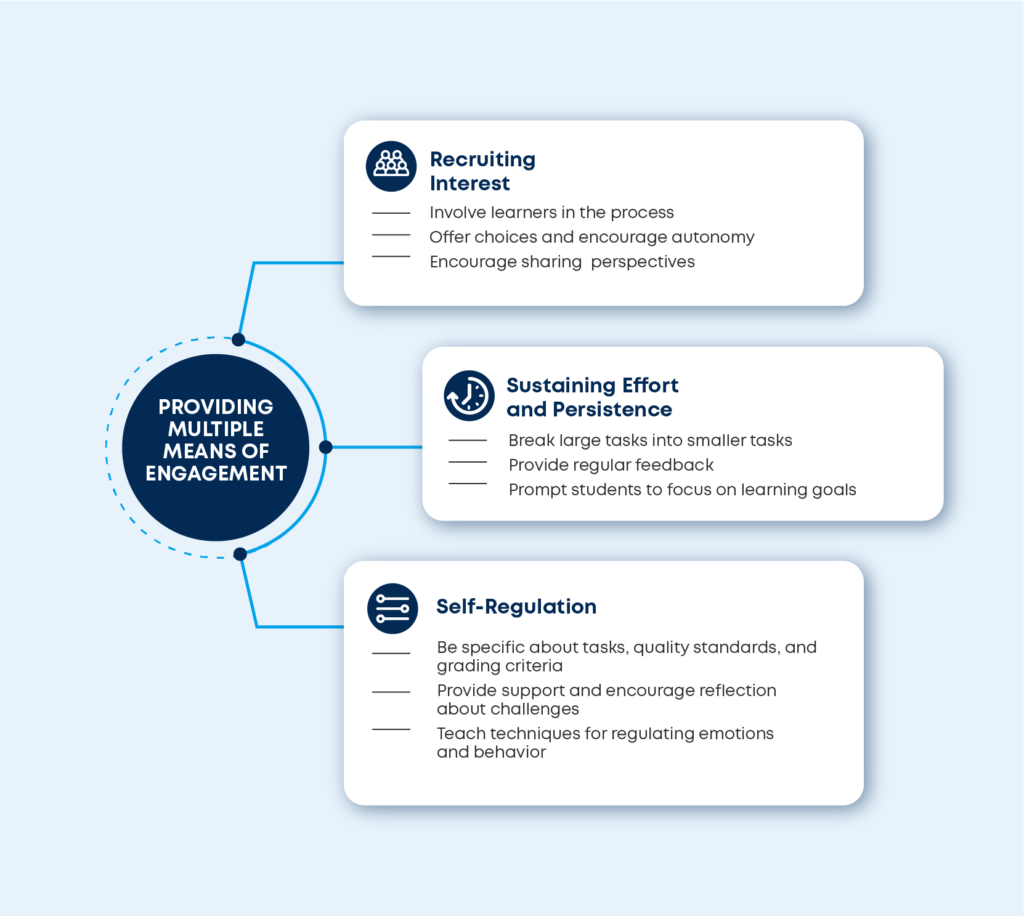Carol teaches fourth-grade science. On the first day of school, she talks to her class to get to know them better. A few of her students don’t speak English as a first language, two students have visual impairments, and some have motor difficulties. Carol is worried that the textbook-driven instructional methods the school follows won’t be enough to ensure that each student learns effectively.
Carol’s is not an isolated experience. Many teachers face this dilemma. Learners are typically expected to learn concepts through text—either print books or online text. But not all students find it easy to access the information they need. Learners who have a learning disability, a visual impairment, a language barrier, or a short attention span may not be able to learn effectively using text. Learners who have a physical disability that restricts movement may find it difficult to take notes. How can teachers address these diverse needs in a single classroom? How can learning environments be designed to allow for the diversity of learning preferences and abilities students bring to class?
Universal Design for Learning (UDL) addresses this need. UDL is a framework that helps teachers design learning experiences that accommodate the varying level of skills and abilities among students and reduce the need for special adaptations for students with disabilities.
The UDL framework to maximize learning for all students is based on three defining principles. Each principle has an accompanying set of comprehensive guidelines explaining how to use resources and tools to improve learning. Educators can use each of these principles to make their presentation of information more accessible and appealing, increase student engagement in the classroom and develop inclusive evaluations and assessments.
Multiple means of representation:
This principle encourages educators to present information in a variety of formats. The same concept could be presented in text, through images, through a video, via audio, or through hands-on activities. Learners may require assistive technologies and devices that aid learning—such as screen readers, automatic page turners, voice recognition programs, or closed captioning devices—to access this content.

Making information available in multiple formats is important because learners differ in how they perceive and understand the concepts presented to them. Learners with learning disabilities, sensory disabilities, or cultural and language differences may not benefit from a one-size-fits-all approach to content and may require different formats to suit their needs. There may be others who simply comprehend certain information more efficiently through auditory or visual means than through printed text. Multiple representations of a concept—known as dual coding—facilitates learning by allowing students to see connections within individual concepts and between different concepts.
Multiple means of action and expression:
This principle helps educators provide students with a variety of ways to demonstrate what they’ve learned. Learners differ in how they navigate through learning environments and demonstrate what they know.

For example, learners with significant locomotor disabilities, such as cerebral palsy or muscular dystrophy, and those who experience language barriers might have different approaches to learning tasks. They may prefer to express what they know through written text, visual or oral presentation, or a group project.
Multiple means of engagement:
This principle encourages educators to use different ways to motivate learners. Learners vary with regard to how they can be encouraged to learn. Some of the factors that influence individual variation in motivation include culture, neurology, personal relevance, and prior knowledge. For example, learners with dyslexia are generally able to understand concepts more quickly through experiential learning than through the use of printed texts. These students might be motivated to learn if the concepts are taught through activities that use kinesthetic skills, such as drama or role playing.

A single means of engagement does not suit all learners in every context. Some learners have a high preference for novelty and spontaneity, while other learners have a high preference for strict routine. Some learners prefer to work alone, while others prefer to work in groups.
The principles of UDL can be applied to a course’s overall design as well as to the specific instructional strategies and materials used while teaching a course. The principles can be incorporated into lectures, group work, learning activities, field work, discussion, and demonstrations to make learning more accessible and more effective for all learners.



